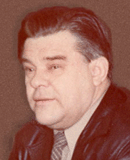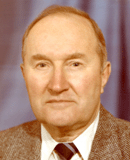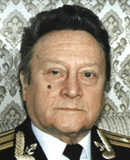

ERGONOMICS IN RUSSIA
ENTERPRISES
History of the Association
The Russian society of ergonomists known as the Inter-Regional Ergonomics Association (IREA) originated from the Soviet Ergonomics Association (SEA) established in 1986. The founder and first president of SEA was Professor A.I. Gubinsky. SEA hosted annual All-Union conferences involving design, evaluation and optimization of system operation, inter-regional workshops on ergonomics and efficiency of human-machine systems, and symposia on efficiency, quality and reliability of human-machine systems. SEA became a federated society registered with the IEA. In 1993 SEA organized the first international conference 'Ergonomics in Russia, Commonwealth of Independent States (CIS) which was a once off activity.
The Inter Regional Ergonomics Association (IREA) was established on August 7th, 1995 as an assignee of the SEA. First president of IREA was Professor P.Ya. Shlaen.
History of ergonomics in Russia and USSR
The evolution of ergonomics in Russia started in the 1920s. The main areas of work in this period were industrial design, physiology, biomechanics, and 'psycho-technology'. The main contribution to industrial design in this period was made by Russian avant-garde artists who proposed the idea of 'industrial art'. They were inspired by the idea of building a new society where humans deal with modernity under comfortable work conditions. They asserted that artists must be involved in the design of industrial machines, workplaces and interiors.
'Constructivism' and 'proletarian art' advanced in fine art and architecture during the early twenties were the main art styles influencing the industrial design. Early in the twenties famous artist-constructivist V. Tatlin established the research and design institute for 'material culture' in Petrograd (now St Petersburg). This institute designed handy and highly artistic everyday goods such as chairs, beds, and cooking batteries. Another principal figure in Russian constructivism was A. Rodchenko who made contributions to graphical design and the design of multifunctional objects.
In 1921 the first All-Russian Conference on 'Scientifically Based Labour Management' was held. In 1918 the Institute for the study of brain and psychical activity had been established under leadership of famous Russian physiologist V. Bekhterev, and in this institute the department of Occupational Psychology was created. In 1920 Bekhterev and Myasischev proposed to establish new discipline of science studying labour - 'ergology' or ergonology'. In the twenties V. Ukhtomsky began research activity in the area of occupational physiology. He established a laboratory for studying work in industrial plants in Petrograd . At the same time the Central Institute for Labour was established. An essential contribution to development of ergonomics in Russia during this period was made by N. Bernstain founded basics of biomechanics.
In the thirties 'psycho-technology', a new discipline directed at analysis and improvement of occupational activity, was formed in the USSR. Intensive research was undertaken in the area of aviation ergonomics with studies undertaken on airplane cockpits focusing on handles, instrument panels, pilot chair, and navigator's workplace. Many large-scale plants at that time established psycho-physiological laboratories which conducted studies on improvement of human work with machines and production lines. The 'Psycho-technology Society' and 'Soviet Psycho-technology' journal were established. However, in the middle of 1930s all activity in the field of psycho-technology was stopped as the result of political decrees and repressions in the USSR.
An attempt to restore study in the area of occupational psychology in the USSR occurred at the end of 1950s. At this time two terms, engineering psychology and ergonomics were brought into use. As in other developed countries, the defence establishment was the main requester of work in this area. The applied fields were aviation, space and defence technology. Research laboratories in engineering psychology were established in Leningrad State University in 1959 (under leadership of B.F. Lomov), and in Institute of Automatic Equipment in 1961 (under leadership of V.P. Zinchenko). Great contributions to development of the discipline at that time was made by renowned Russian psychologists B.G. Ananyev , A.N. Leontyev, P.Ya. Galperin and others.
At the beginning of the sixties work in the area of equipment and environmental design was intensified. In Moscow the Research Institute of 'Technical Aesthetics' (industrial design) (VNIITE) comprising the Department of Ergonomics was established. Within a few years VNIITE had founded 10 regional branches in the biggest cities of the USSR. The institute carried out ergonomics projects in the civil sector promoting and popularizing ergonomics and industrial design. The VNIITE researchers greatly contributed to the application of ergonomics principles in the design process. In the sixties professor V.M. Munipov and colleagues published the first textbooks, guidance and a journal on ergonomics.
The seventies and eighties saw accelerated progress both in civil and in defence sectors. The team, under leadership of Professor P.Ya. Shlaen, developed a series of ergonomics standards for defence equipment design. Also they established the Ergonomics Research and Development Centre as one of the leading ergonomics organizations in Russia. Broad research and development work towards a theory of human-machine systems (in the navy, space and aviation) was done by Professor A.I. Gubinsky and his colleague Professor V.G. Evgrafov. Gubinsky systematized the main terms in ergonomics (such as operator, error, reliability, efficiency, etc.) and proposed a theory for integrated analysis of human-machine systems (HMS), including analysis and assessment of HMS and operator reliability and efficiency. Early in the seventies he created the Generalized Structure Method which provides a basis for functional-structural task analysis and calculation of error probability and operator response time. This method is still used for analysis of operator reliability.
While the positive influence of ergonomics in defense and industrial sectors was evident, there was not any significant progress in the area of consumer goods. In spite of the fact that such institutes as VNIITE and others were designing advanced and carefully elaborated samples (irons, kettles, furniture), the industry did not implement these ideas inserial production because of absence of materials, technology, low corporate culture, and the absence of serious competition between different manufacturers in the USSR.
The economic recession of the 80 and 90s aggravated the situation. Most research and applied work in the field of ergonomics was stopped because of lack of money and setbacks in production. Some professional ergonomists changed their area of activity (with the exception of human-computer user interface designers). At the start of this century the economic situation in Russia began to change. As the consequence, activity in different fields of ergonomics was intensified. Step by step many industrial plants replaced production equipment and technology, implementing new human-oriented approaches to the design and manufacture of goods. The conversion of military technologies enables production of goods with advanced ergonomic characteristics.
The slogans of "Good ergonomics - good economics", "Diversity in ergonomics" and "Ergonomic is style of life" all emphasize that a human-oriented approach can be demonstrated everywhere - comfortable workplaces, handy control boards and handles in cars, understandable and readable signs in metros and in the street, safe household appliances and kitchen instruments, entrances adapted for disabled persons, work environment auspicious for health to name but a few. Professional ergonomists in modern Russia feel responsibility for all of these issues.
Honours to Russian ergonomics

|

|

|
|
|
EVGRAFOV Vladimir G. |
AKHUTIN Vladimir M. |
The ErgoIT Company (Saint-Petersburg)
Institute of Industrial Design (Moscow)
interUX Usability Engineering Studio (Moscow-Tallinn)
UsabilityLab provider of usability service (Moscow)
© Inter-Regional Ergonomics Association, 2006-2016

